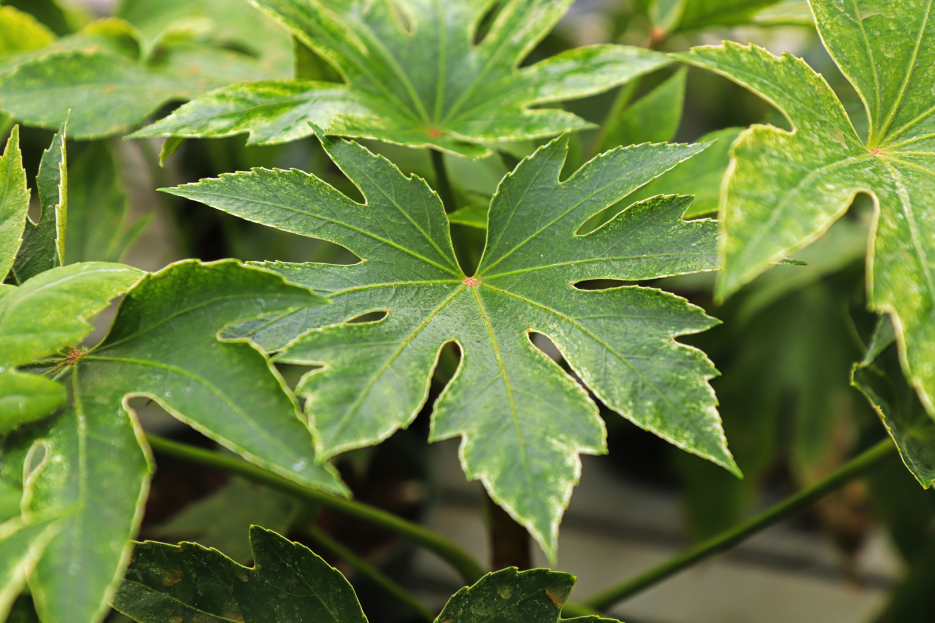
The Fatsia plant, also known as Fatsia japonica, is a striking evergreen shrub native to East Asia. It’s appreciated for its large, glossy leaves that can grow up to 12 inches wide, giving it a bold, tropical appearance that adds a unique flair to any indoor space. Easy to care for and adaptable, the Fatsia plant is a fantastic option for plant lovers of all experience levels. Here’s a comprehensive guide to help you keep your Fatsia plant healthy and thriving!
Fatsia plants thrive in bright, indirect light. They can tolerate low light conditions, making them ideal for places with limited natural sunlight. However, the plant will grow best and produce larger, more vibrant leaves when exposed to bright, filtered sunlight. Direct sunlight can scorch its leaves, so it’s best to avoid placing it in direct sun for long periods.
If you notice that the leaves are becoming smaller or the plant is becoming leggy, it may not be receiving enough light, and you should consider moving it to a brighter location.
The Fatsia plant enjoys consistently moist soil, but it’s important not to overwater it. Allow the top few inches of soil to dry out before watering. During the growing season (spring and summer), you can water more frequently, while in the fall and winter, when growth slows down, you should reduce watering.
It’s essential to ensure the plant’s pot has good drainage to prevent water from sitting at the bottom, which can cause root rot. Water thoroughly, ensuring that excess water flows out of the drainage holes.
Avoid allowing the plant’s roots to sit in water for extended periods, and always empty the saucer after watering.
Fatsia plants prefer well-draining, fertile soil. A general-purpose houseplant soil mix will work well, but you can improve drainage by adding perlite or sand. This helps keep the soil from becoming soggy, which can lead to root rot.
When choosing a pot, make sure it has drainage holes. If you notice that the plant is outgrowing its pot or roots are growing out of the drainage holes, it’s time to repot. The Fatsia plant is slow-growing, so repotting every 2-3 years should be sufficient.
Fatsia plants prefer mild temperatures and are happiest in the range of 60-75°F (15-24°C). They are not frost-tolerant and should be kept away from cold drafts or areas where the temperature drops below 50°F (10°C).
Fatsia plants also enjoy moderate to high humidity. If you live in a dry climate or the air in your home is dry during winter, you may want to increase humidity around the plant. This can be done by misting the plant occasionally, using a humidifier, or placing it on a humidifying tray with pebbles and water.
To encourage healthy growth and vibrant foliage, feed your Fatsia plant during the growing season (spring and summer). Use a balanced, liquid fertilizer diluted to half strength once a month. Avoid fertilizing during the fall and winter months, as the plant’s growth slows during this period, and it won’t need the additional nutrients.
Over-fertilizing can cause the plant to develop weak stems and leggy growth, so it’s important not to fertilize too frequently.
Fatsia plants are relatively low-maintenance, but occasional pruning helps maintain a compact shape and encourages new growth. Trim any dead or yellowing leaves with clean, sharp scissors or pruning shears. You can also cut back any long or leggy stems to keep the plant looking neat.
Additionally, wiping the large leaves with a damp cloth can help remove dust and keep the leaves glossy. This also helps the plant absorb more light.
Fortunately, the Fatsia plant is non-toxic to pets! Making it a safe choice for households with cats and dogs. However, it’s still a good idea to keep the plant out of reach of curious animals, as ingesting large quantities of any plant could cause stomach upset.